On Sunday 8 September, six different teams from across the city met in Elm Park for The n Games, a tournament of League-style invented sports (background on the tournament and teams here). Half of the games had been invented at previous League events, a few were adapted from the annals of play traditions like the New Games movement, and some were hatched especially for the tournament by the League group.
Organized into two three-team round-robin pools followed by playoffs, the tournament had a new game starting every 40 minutes (schedule here). Immediately before each match, MC Jeremy Glen or a spectator drew the name and rules of the game to be played, and the teams set quickly to strategizing how best to play the game. Individual game reports follow below.
- Introductions by MC Jeremy Glen
- Playing Bear, Frog, Bug instead of flipping a coin
- Petri rules
- First game of Petri: Theatre Replacement vs Rethink
- Extra-Sensory Proprioception rules
- Extra Sensory Proprioception: Double Rainbow vs Roadhouse
- Extra Sensory Proprioception
- Extra Sensory Proprioception
- Extra Sensory Proprioception
- Extra Sensory Proprioception
- Extra Sensory Proprioception
- Field Pong rules
- Field Pong: first iteration
- Field Pong: first iteration
- Field Pong, adjusted
- Field Pong, adjusted
- 2nd game of Petri: Roadhouse vs Daughters of Beer
- Petri
- Petri
- Negotiating tiebreaker for Petri
- Scrumble rules
- Scrumble preparation
- Scrumble: Manhunt vs Theatre Replacement
- Scrumble
- Scrumble
- Scrumble
- Satellites rules
- Satellites, turn-by-turn option
- Satellites, continuous play option
- Satellites, continuous play option
- Satellites, continuous play option
- Satellites, continuous play option
- Satellites, continuous play option
- Schedule sheet
- Whoseball rules
- Whoseball, first half variation
- Whoseball, second half variation
- No Look Pass rules
- No Look Pass: Double Rainbow vs Rethink
- No Look Pass
- No Look Pass
- Lotto Rules rules
- Lotto Rules design phase
- Lotto Rules: Roadhouse’s game ‘Siege’
- Lotto Rules: Rethink’s game ‘Hit, Bounce, Keep, Divide’
- Lotto Rules: judges commenting on games
- The n Games Cup, devised by Brendan Tang and Suzanne Ward
- Winners of The n Games: Roadhouse Interactive
10:00 — Rethink vs Theatre Replacement
Pool x. Game played: Petri
League organizers were secretly glad that the first game to be drawn was one of our home-grown ones, which we had play-tested a lot over the past few weeks. Petri is in the family of bocce- and curling-like games, but uses a metaphor of viral infection, with the possibility of runaway scoring. A number of ‘dishes’ are marked on the field, and the goal is to infect them without being inoculated (neturalized) by the other team. Scoring is by multiplication rather than addition, so that landing multiple molecules (balls) in multiple dishes that have not been inoculated creates the possibility of large scoring jump. Playing Petri most effectively therefore requires not only placing your molecules accurately in order to either infect or inoculate, but also planning ahead in order to maximize your score.
Taking turns selecting their molecules to start the rounds, for this matchup between advertising agency Rethink (in sporty whites) and Theatre Replacement (in jaunty yellow headbands), each team stayed with their choice of balls — golf or ball-hockey — throughout the game. We only had time to complete four rounds, with Theatre Replacement coming out on top.
10:40 — Roadhouse vs Double Rainbow
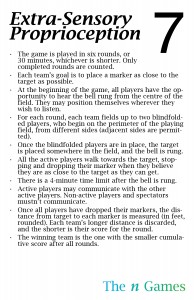 Pool y. Game played: Extra-Sensory Proprioception
Pool y. Game played: Extra-Sensory Proprioception
The first matchup in Pool y saw game studio Roadhouse Interactive, in collegiate grey T-shirts, playing the neon-clad Double Rainbow Dodgeball League.
Proprioception is the knowledge of where one’s body is in space, and the game of Extra-Sensory Proprioception requires one to use all one’s non-visual senses to navigate through space. Blindfolded pairs from each team start on different sides of the field, a whistle is blown from somewhere in the field, and each person walks blindfolded to try to place a marker as close as possible to that place. Only the marker for each pair was recorded, so there were possible strategies for minimizing errors. Blindfolded players were allowed to communicate with each other, and we saw some pairs use that to triangulate and get close to each other, while others used it to maintain a distance, thereby averaging out possible errors. Other pairs did not communicate verbally but relied on their own senses.
Double Rainbow proved themselves to be masters of this quiet activity just as much as the boisterous one they are known for.
11:20 — Manhunt! vs Rethink
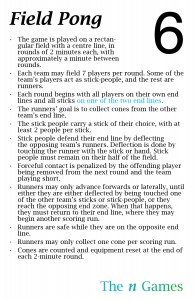 Pool x. Game played: Field Pong
Pool x. Game played: Field Pong
The game drawn for the match between urban sports group Manhunt! and Rethink was another one hatched at a previous League event, but not fully tested. As is typical with League, it required a bit of rule adjustment and negotiation.
The basic objective is for some of one’s team to collect cones from the other team’s end line, while others defend their zone from opposing runners. Defenders must hold a stick with another teammate in order to defend, and can deflect opposing runners back to their end line by touching them. Runners may only advance forward or laterally and must return to their end line if they are touched by the stick-holders.
This game is very demanding of the runners, and several different strategies were tested over the course of the match. Rethink successfully made a sudden switch from defense to full-on offense, and at one point both teams attempted full-defense setups with only one runner. Consensus was that this game could do with a bit more clarity in order for the best strategies to emerge.
Rethink began to show their strength in agile field-based games, and finished with the win.
12:00 — Daughters of Beer vs Roadhouse
Pool y. Game played: Petri
Again Petri was the game drawn, and because neither craft beer aficionados Daughters of Beer & Co. (wearing race bibs and lanyards) nor Roadhouse had played it already, we proceeded. This Petri match featured some effective placement of molecules and inoculations, and saw Roadhouse come from behind to tie the game in the final round. Not having invented a tiebreaking mechanism in advance, we had to decide on one, and settled on a three-ball sudden death round, which Roadhouse won.
12:40 — Theatre Replacement vs Manhunt!
For the final match in the x pool round-robin, the game drawn was Scrumble, a game hatched by League for The n Games. Teams Theatre Replacement and Manhunt were each issued a set of pinnies with single letters on the front and back, and given 30 minutes to photograph themselves and recruited bystanders wearing the pinnies to spell out words visible within the photos. A point was awarded for each letter of each word, with double points given for the most inventive picture of the bunch, as decided by judges recruited from the bystanders.
The words produced by the two teams were quite different, and ranged from simple nouns to actions to a few abstractions, and even a conjunction. Manhunt’s score was tallied first, an impressive 119 points, then Theatre Replacement’s, then the judges deliberated over the most inventive picture, considering Theatre Replacement’s use of a player standing on her head to turn an M into a W, but finally declaring that team’s ‘TEAHOUSE’ picture the most inventive. The doubled points for that word brought TR to 117 — a very close score for two quite different approaches.
13:20 — Double Rainbow vs Daughters of Beer
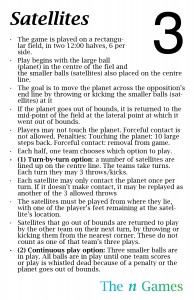 Pool y. Game played: Satellites
Pool y. Game played: Satellites
Satellites, the final game drawn for Pool y play was one one might have expected Double Rainbow’s dodgeball skills to carry easily. It was one that started by posing a strategic decision about whether to use a more deliberate turn-by-turn approach or a continuous play option for the game, the overall goal of which was to propel a large ball over the opposite end line by throwing or kicking smaller balls at it.
For the first half of the game, Double Rainbow chose the turn-by-turn option, but neither team was able to advance the large ball very far with their three throws per turn. For the second half, Daughters of Beer chose the continuous play option, and the game play turned raucous. The Daughters quickly developed an effective strategy of using some players as primary throwers and others as feeders, and they scored three times to the Rainbows’ one.
Tiebreakers
With pool play done, all six teams remarkably finished with one win and one loss, so tiebreakers were required to break the three-way ties in both pools.
For Pool x, Manhunt did not have enough players to continue, so they defaulted the playoffs. We decided that we would fall back on the head-to-head matchup between the remaining pool teams, which put Theatre Replacement in first place and Rethink in second for Pool x.
To break the tie in Pool y, we played a three-way sudden-death round of Extra-Sensory Proprioception. Continuing their dominance of the earlier game, it was no surprise to see Double Rainbow finish first, with Roadhouse second and Daughters of Beer third.
The first and second-place finishers in each pool then played a team in the opposite pool to determine who would advance to the final.
14:20 Semi-final — Theatre Replacement vs Roadhouse
Pool x 1st place vs Pool y 2nd place. Game played: Whoseball
The League principle of having teams contribute to making decisions about the character of the game had already appeared in earlier matchups, and played a big part in the semi-final match between Theatre Replacement and Roadhouse. Whoseball is a game based on soccer/football, except that for each half, each team is asked to introduce or modify one of the accepted rules of soccer, while remaining within the spirit of the original game. One can imagine the gamut of possibilities.
For the first half, Roadhouse decreed that one had to be stationary while playing the ball, while Theatre Replacement specified that players had to be holding hands with someone else in order make a play. Perhaps unexpectedly, this arrangement worked, even more unexpectedly prompting players from opposite teams to link up in order to mark each other.
For the second half, Roadhouse decided that all passing had to be done laterally or backwards, though carrying and shooting could be done forwards. Theatre Replacement came up with a rule that brilliantly solved the problem of diving in soccer, by requiring that after making their play on the ball, every player had to roll three times on thee ground. Introducing this disincentive to the play effectively produced a more efficient — not to mention hilarious — style of game play. Roadhouse again pulled off a late-game comeback to move on to the final.
14:40 Semi-final — Double Rainbow vs Rethink
Pool y 1st place vs Pool x 2nd place. Game played: No Look Pass
The game played in the second semi-final appeared well suited to both Double Rainbow’s agility and Rethink’s preference for swarming strategies. No Look Pass is a sport in which teams alternate playing offense and defense. Offensively, they attempt to bring balls to the other team’s end line, without being tagged by the defensive team. The balls are carried and passed behind the back, so there are possibilities for deception and synchronized movements.
In the spirit of League, we took feedback at half-time about whether any adjustments to the game were required for more rewarding game play, and at that point it was decided to try the longer, narrower orientation of the field.
Rethink particularly excelled at the coordinated formations, often placing multiple balls with a fewer number of carriers, and they advanced to the final.
15:20 Final — Rethink vs Roadhouse
Winners of semi-finals. Game played: Lotto Rules
The final game determined which team would claim The n Games Cup, a thrift-store sports trophy mashed up with 3D-printed elements, devised by Brendan Lee Satish Tang and Suzanne Ward. Fittingly, the final game was a game-invention game: Lotto Rules. From a stack of cards printed with words, four cards were drawn, and these words had to figure into the rules for a game that each team would design.
The words drawn were: HIT, DIVIDE, BOUNCE, and KEEP. Following a seven-minute design process, the teams introduced their games, and then played both.
Roadhouse’s entry was a game entitled ‘Siege,’ in which each team attempted to defend their KEEP by catching a ball HIT into it by the other team, before it BOUNCEd a second time. The penalty for missing a catch was that one’s keep would be DIVIDEd until it was no longer playable.
Rethink’s game described a sequence of actions that unfolded over the length of the field a number of times over a set period: HIT a large ball with a stick, BOUNCE it once from where it lay, take five large steps while KEEPing it in one’s grasp, and finally DIVIDE a set of vuvulezas (Rethink’s contribution to maintaining the sports atmosphere throughout the day) for a point.
With both games play-tested and minor adjustments made along the way, a group of judges recruited from the other teams conferred to decide which invented game was the better game. With their opinion that Siege had somewhat more potential for fulfilling play, Roadhouse Interactive was declared the winner of this inaugural n Games.
Thank you; come again!
League would like to thank all the teams and players for their enthusiastic and creative approaches to the challenges. As with all League events, it was active participants who truly made a rewarding day.
Upcoming League events
On Tuesday 24 September League hosts “How To Kickstart“, a workshop by Kickstarter art director Stephanie Pereira, featuring some projects successfully produced through that crowd-funding platform. This free event is sold out, but check the ticket page in the days preceding the event, as we will move it outside for greater capacity if the weather will be nice.
The next regular League play date is Sunday 29 September, starting at 1 pm in Elm Park. League play events are free and open to all; bring both body and mind.

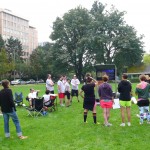
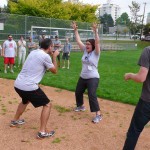
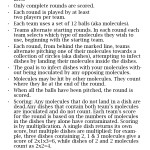

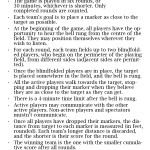
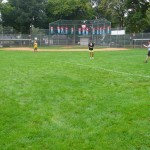
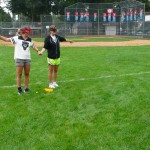

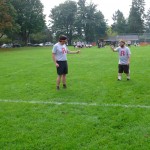
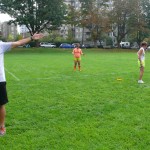
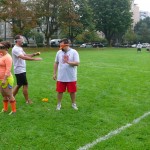
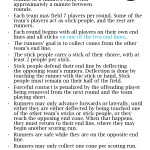
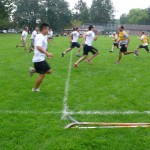
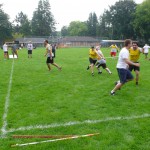
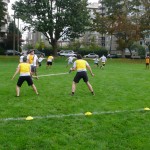
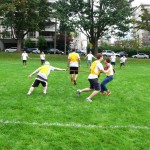
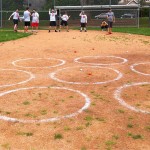
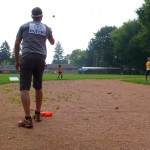
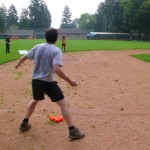
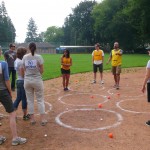
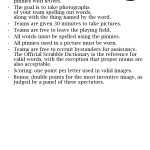
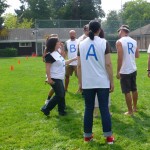
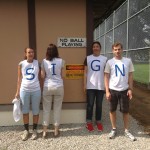

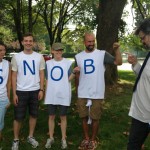
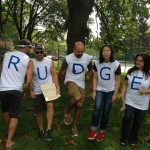
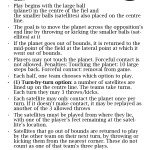
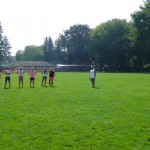
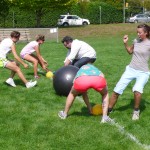
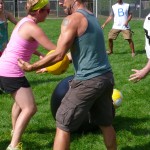
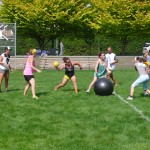
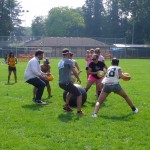
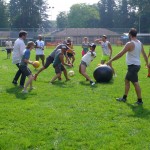
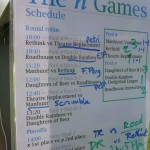

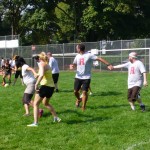
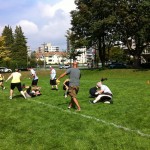
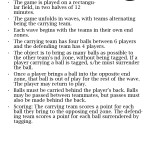
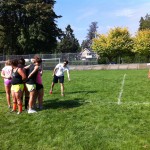
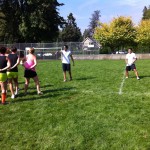
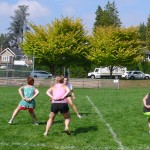
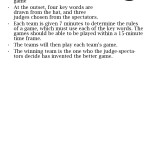
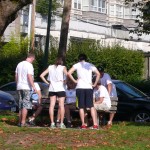
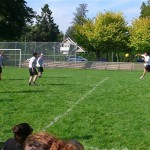
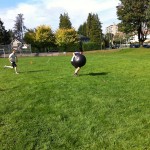
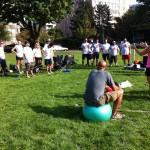

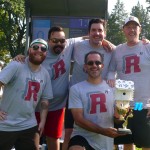
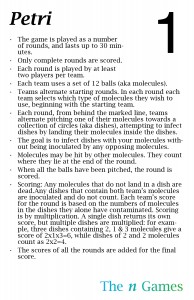

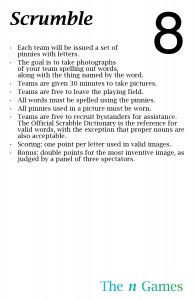

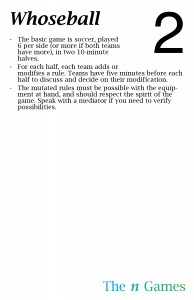
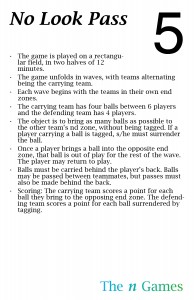
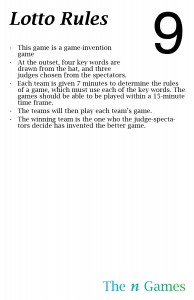
2 comments
Toggle Comments